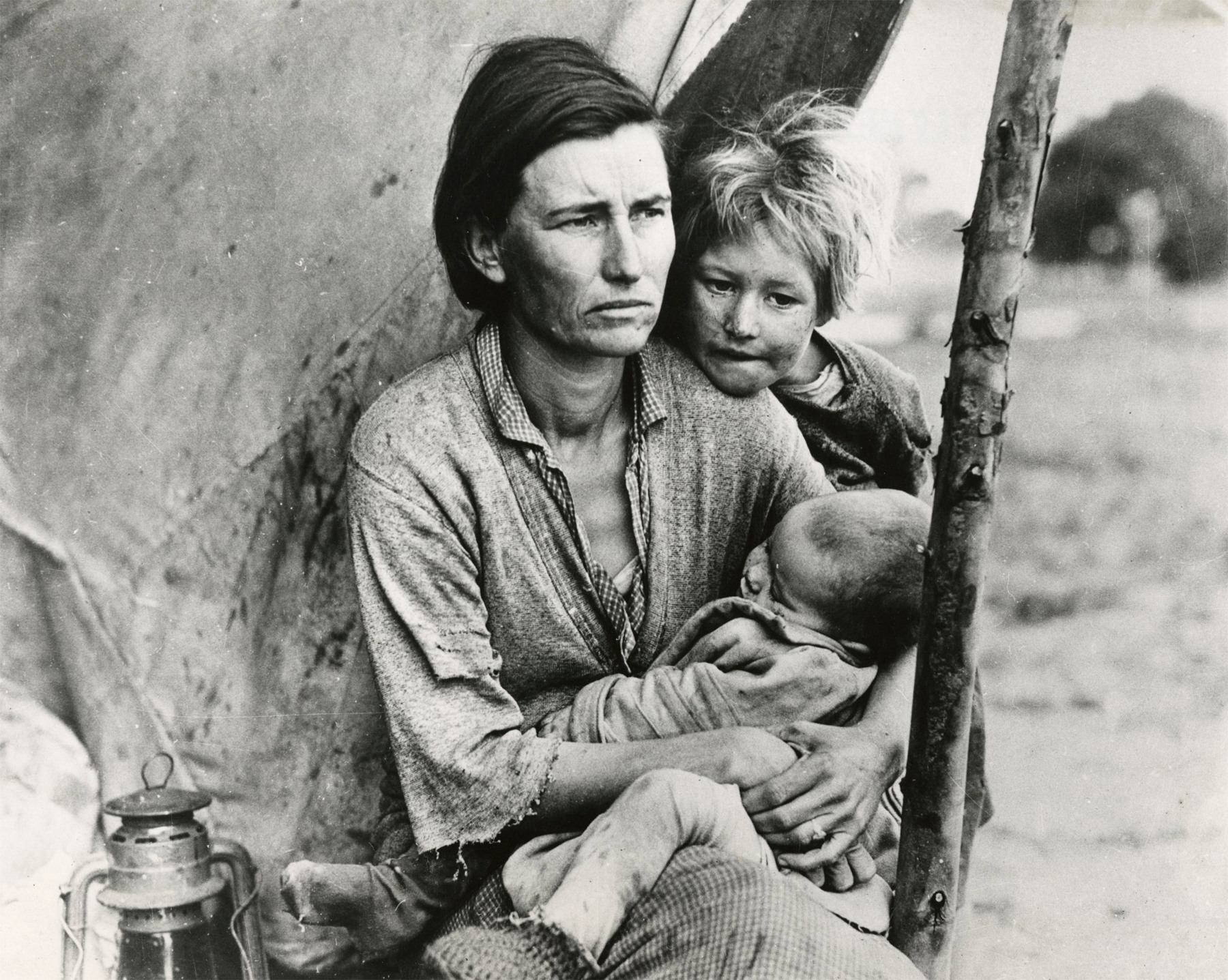
Migrant Mother, Nipomo, California, 1936
Dorothea Lange
Dorothea Lange (1895-1965) attended the New York Training School for Teachers and from 1917 to 1918, attended a photography course run by Clarence H. White at Columbia University. Lange moved to San Francisco in 1918, and in 1919 she set up a successful portrait studio. With the Stock Market crash of 1929 Lange began to photograph the effects of the economic decline. She had her first one-woman show at the Brockhurst Studio of Willard Van Dyke in Oakland, CA (1934), and in the same year met the economist Paul Schuster Taylor, under whom she worked for the California State Emergency Relief Administration in 1935. Later that year she transferred to the Resettlement Administration, set up to deal with the problem of the migration of agricultural workers. She continued to work for this body, through its various transformations (including its time as the Farm Security Administration), until 1942.
One of her most famous photographs from this project is Migrant Mother, Nipomo, California, 1936, which depicts an anxious, distracted mother and three children. In 1939, in collaboration with Taylor, who provided the text, she published An American Exodus, which dealt with the same social problems. In 1941 she was awarded a Guggenheim Fellowship, and this allowed her to take a series of photographs of religious groups in the USA, such as those of the Amish. In 1942 she worked for the War Relocation Authority and from 1943 to 1945 for the Office of War Information in San Francisco. In 1958–9 she worked with Taylor in East Asia and in 1960 accompanied him to South America. She worked in Egypt and the Middle East in 1962–3, producing such photographs as Procession Bearing Food to the Dead, Upper Egypt in the detached, documentary style that characterizes her work.
Exhibitions